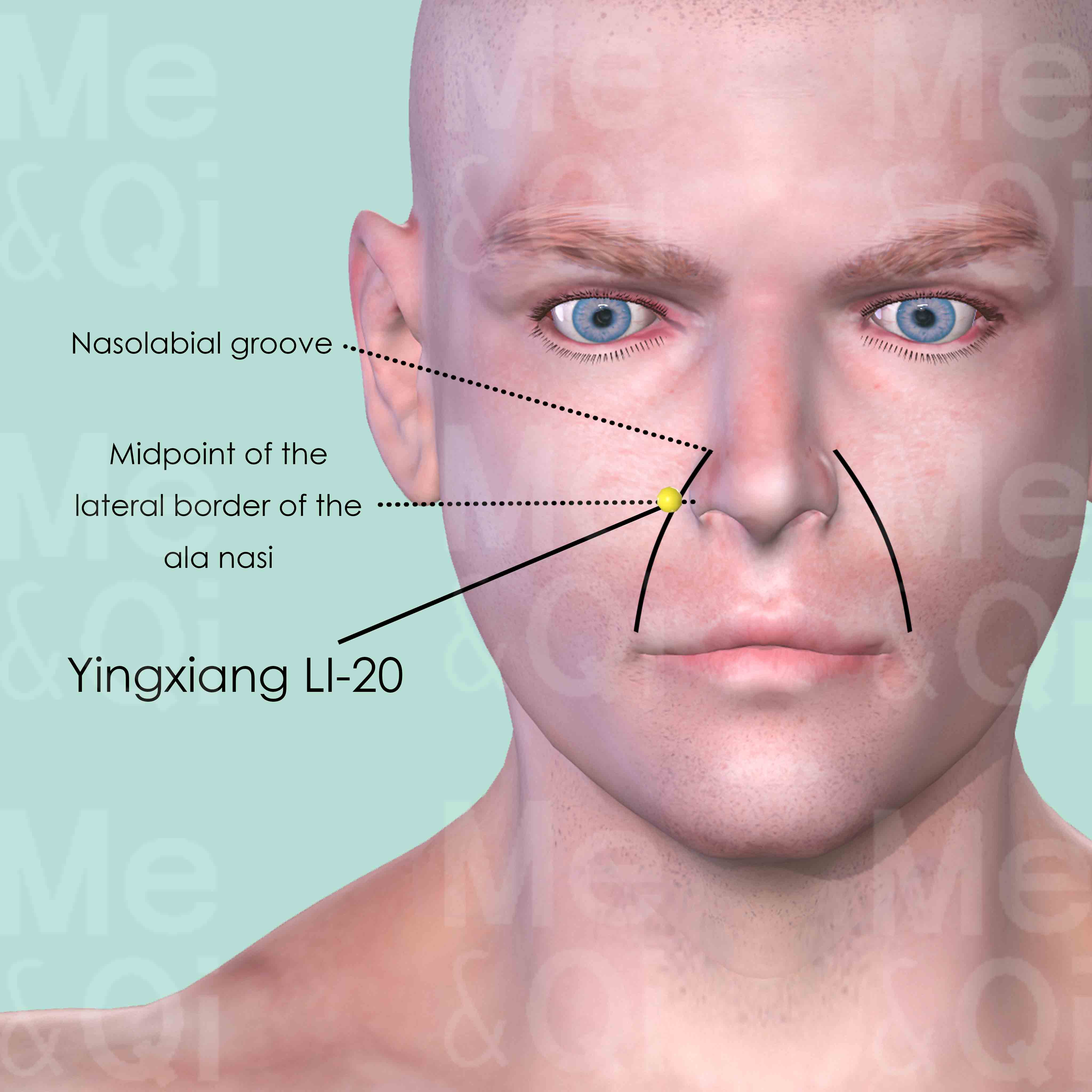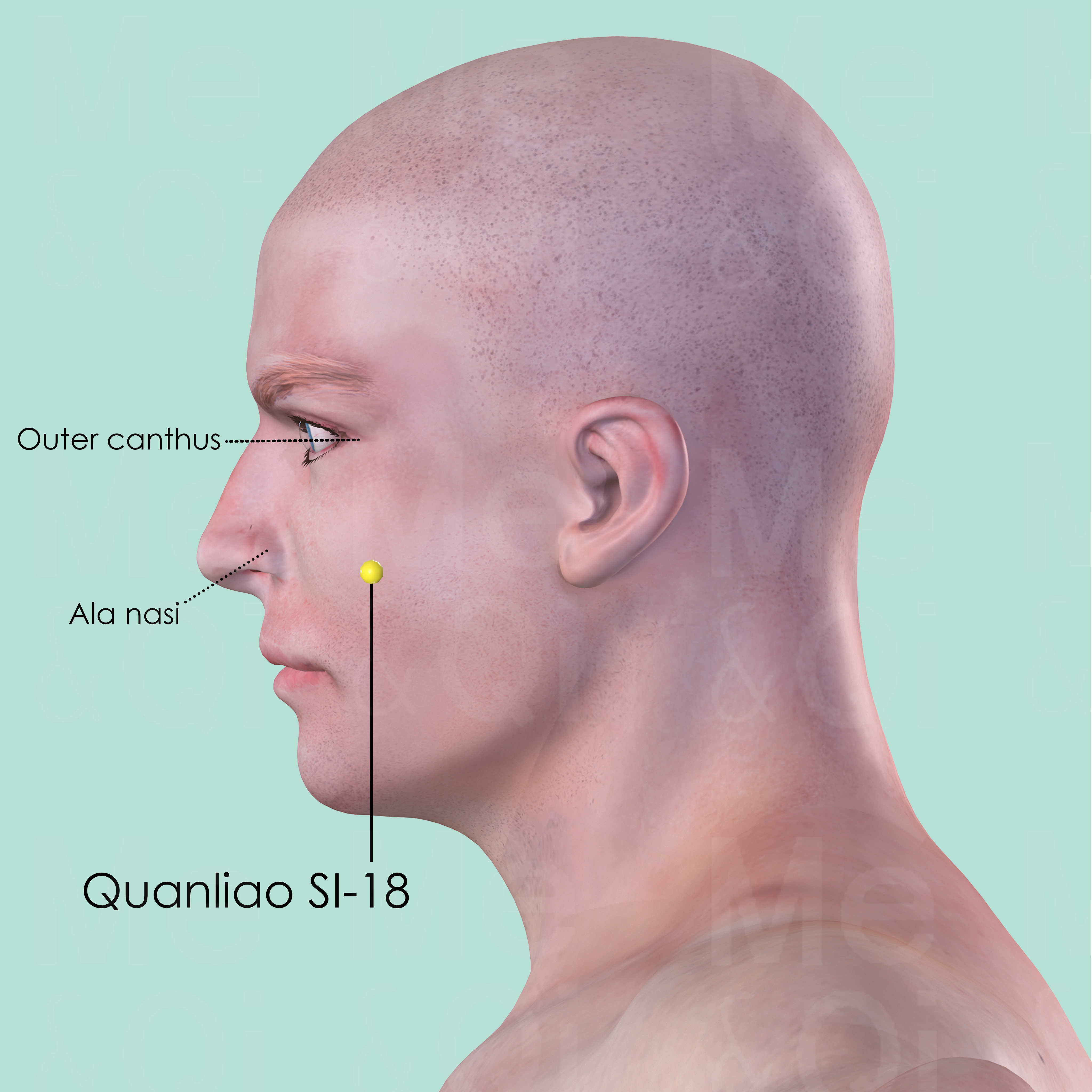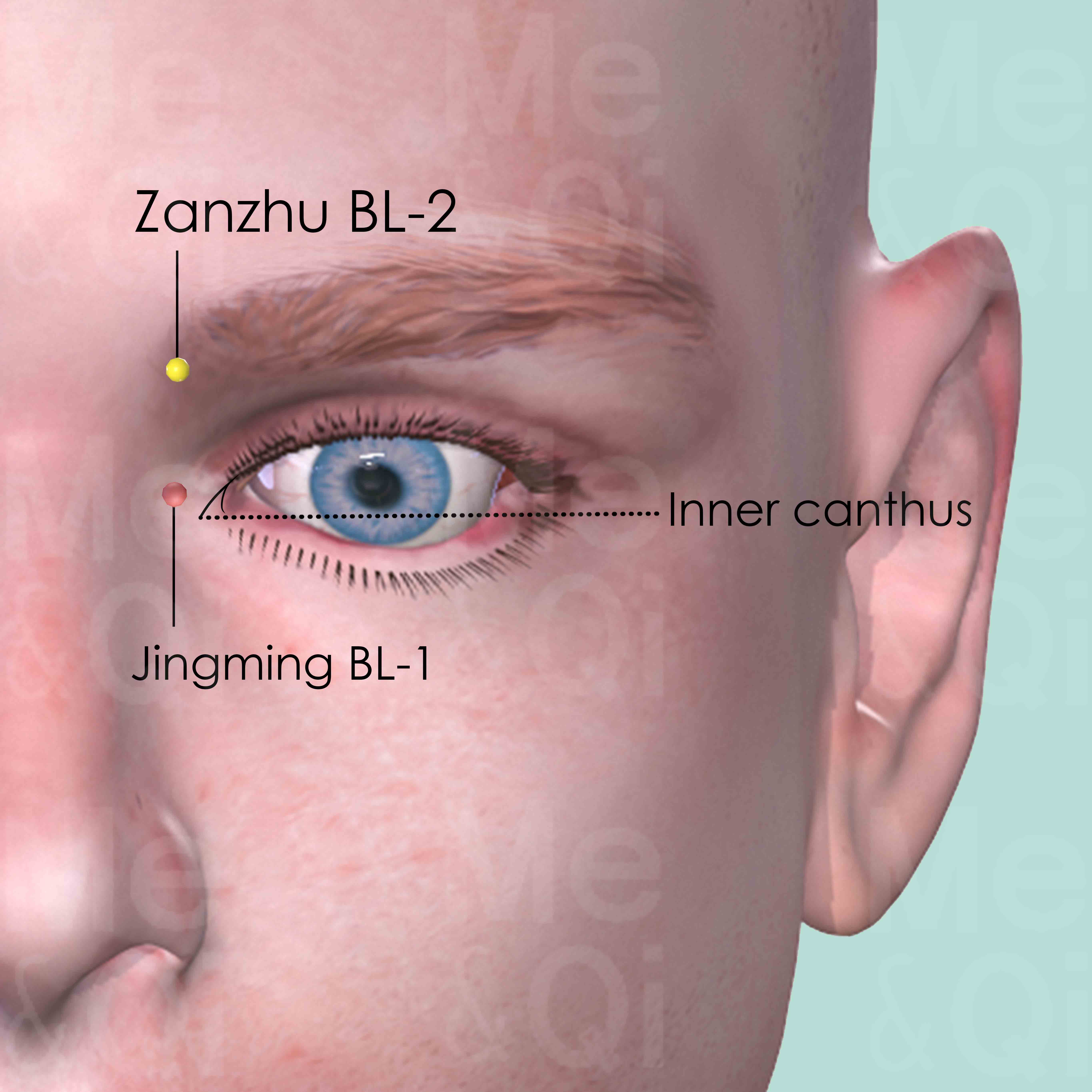Facial Ticaccording to TCM
Symptom family: Tic Disorders
Parent symptom: Tic Disorder
What is Facial Tic?
A facial tic is an involuntary, repetitive spasm or contraction of the facial muscles, often manifesting as rapid blinking, grimacing, or movements of the mouth. These spasms are typically uncontrollable and can be a source of social discomfort or distress for those affected. Facial tics can be transient or part of a chronic tic disorder, sometimes associated with conditions like Tourette syndrome. Their severity and frequency can vary, with some individuals experiencing tics infrequently and others having more persistent issues.
How does TCM view Facial Tic?
In Traditional Chinese Medicine (TCM), a 'pattern' refers to a comprehensive diagnostic conclusion that encapsulates the nature of a patient’s condition at a particular time. For issues like facial tic, understanding the pattern is crucial. It offers insight into which elements within the body are out of balance, be it Qi, Blood, Yin, or Yang.
TCM prioritizes this pattern recognition because it shapes the treatment strategy, whether that involves acupuncture, herbal medicine, or dietary changes. It is a holistic approach, ensuring that the treatment addresses not just the symptoms but the root cause according to TCM theory.
Root Causes of Facial Tic in TCM
In Traditional Chinese Medicine, the occurrence of facial tics is often explained by the disturbance of Liver Wind within the body. Two primary causes can lead to this internal agitation: Liver Yang Rising and Liver Blood Deficiency. When Liver Yang ascends excessively, it can cause involuntary movements, while Liver Blood Deficiency may fail to anchor the Yang, allowing it to 'float' and thus lead to spasms. Both conditions disrupt the harmonious flow of Qi and Blood, essential for maintaining muscle control and facial expression stability. Identifying whether the Liver Wind arises from Yang Rising or Blood Deficiency is key to selecting the most appropriate TCM treatment.
Explore below more details about what might cause Facial tic according to TCM.
- By Syndrome
- By Organ
- Wind
- Blood Deficiency
- Yang Excess
- Liver
Wind
In TCM "Wind" is a concept that represents a pattern of disharmony, often characterized by its sudden and unpredictable nature, much like a gusty wind changing direction without warning. This pattern is associated with symptoms that come and go quickly or move around the body, such as itching, tremors, or even certain types of pain. Wind is considered to be a primary cause of illnesses that have these rapidly changing characteristics. In TCM, external Wind often refers to illnesses that start suddenly, like the common cold, believed to be caused by external pathogenic factors like climatic changes. On the other hand, internal Wind can be linked to internal imbalances and can manifest in conditions like dizziness or spasms. ... see more
Wind Patterns That Can Lead to Facial Tic
Common Symptoms: Dizziness Blurry Vision Limb Numbness Tingling Of Limbs Poor Memory Insomnia Headaches Hypertension
| Pattern Name | Relevant Symptoms | Relevant Formulas |
|---|---|---|
| Liver Wind agitating Internally due to Liver Blood Deficiency | Facial tic, Fine tremor, Dizziness, Blurry vision, Limb numbness, Tingling of limbs, Poor memory, Insomnia, Scanty menstruation... see more | E Jiao Ji Zi Huang Tang | Bu Gan Tang | Si Wu Tang |
| Liver Wind agitating Internally due to Liver Yang Rising | Facial tic, Tremors, Severe dizziness, Tinnitus, Headaches, Hypertension, Dry throat, Dry eyes, Blurry vision, Limb numbness, Tingling of limbs, Poor memory, Back pain, Oliguria, Night sweats... see more | E Jiao Ji Zi Huang Tang | Liu Wei Di Huang Wan | Qi Ju Di Huang Wan | Zhen Gan Xi Feng Tang | Feng Yin Tang |
Blood Deficiency
Blood Deficiency in TCM is like when your body's tank runs low on the vital energy that blood provides. It's not exactly the same as anemia in modern medicine, which is about having too few red blood cells. Instead, Blood Deficiency in TCM is about your body not having enough of the life-giving qualities that blood brings, like nourishment and moisture. This can make you feel tired, look pale, and even feel dizzy or have blurry vision. It's like a garden not getting enough water to stay lush and vibrant. TCM sees this as an imbalance where the body isn't being nourished as it should be, impacting overall health and well-being.... see more
Blood Deficiency Patterns That Can Lead to Facial Tic
| Pattern Name | Relevant Symptoms | Relevant Formulas |
|---|---|---|
| Liver Wind agitating Internally due to Liver Blood Deficiency | Facial tic, Fine tremor, Dizziness, Blurry vision, Limb numbness, Tingling of limbs, Poor memory, Insomnia, Scanty menstruation... see more | E Jiao Ji Zi Huang Tang | Bu Gan Tang | Si Wu Tang |
Yang Excess
Yang Excess in TCM refers to a state where there is an overabundance of Yang energy, leading to symptoms of heat and hyperactivity in the body. This pattern of disharmony often arises from factors like stress, excessive physical activity, overconsumption of spicy or heating foods, or an internal imbalance that causes Yang to flare up. Symptoms of Yang Excess include a feeling of heat, red face, irritability, restlessness, thirst, constipation, and a rapid, forceful pulse. Treatment in TCM for Yang Excess aims to cool down and subdue the excessive Yang while nurturing Yin energy to restore balance.... see more
Yang Excess Patterns That Can Lead to Facial Tic
| Pattern Name | Relevant Symptoms | Relevant Formulas |
|---|---|---|
| Liver Wind agitating Internally due to Liver Yang Rising | Facial tic, Tremors, Severe dizziness, Tinnitus, Headaches, Hypertension, Dry throat, Dry eyes, Blurry vision, Limb numbness, Tingling of limbs, Poor memory, Back pain, Oliguria, Night sweats... see more | E Jiao Ji Zi Huang Tang | Liu Wei Di Huang Wan | Qi Ju Di Huang Wan | Zhen Gan Xi Feng Tang | Feng Yin Tang |
Liver
In TCM the Liver is viewed as the organ responsible for the smooth flow of Qi, Blood, and emotions throughout the body. It plays a key role in regulating mood, storing blood, supporting digestion, and ensuring the health of tendons and eyes. When the Liver malfunctions or is imbalanced in TCM, it can lead to a range of issues such as irritability, mood swings, menstrual irregularities, eye problems, and muscular stiffness or pain. A malfunctioning Liver in TCM reflects not only physical disturbances but also emotional and mental disharmony, emphasizing the holistic approach of TCM in addressing health and wellness.... see more
Liver Patterns That Can Lead to Facial Tic
Common Symptoms: Dizziness Blurry Vision Limb Numbness Tingling Of Limbs Poor Memory Insomnia Headaches Hypertension
| Pattern Name | Relevant Symptoms | Relevant Formulas |
|---|---|---|
| Liver Wind agitating Internally due to Liver Blood Deficiency | Facial tic, Fine tremor, Dizziness, Blurry vision, Limb numbness, Tingling of limbs, Poor memory, Insomnia, Scanty menstruation... see more | E Jiao Ji Zi Huang Tang | Bu Gan Tang | Si Wu Tang |
| Liver Wind agitating Internally due to Liver Yang Rising | Facial tic, Tremors, Severe dizziness, Tinnitus, Headaches, Hypertension, Dry throat, Dry eyes, Blurry vision, Limb numbness, Tingling of limbs, Poor memory, Back pain, Oliguria, Night sweats... see more | E Jiao Ji Zi Huang Tang | Liu Wei Di Huang Wan | Qi Ju Di Huang Wan | Zhen Gan Xi Feng Tang | Feng Yin Tang |
TCM Herbal Formulas for Facial Tic
TCM treatments for facial tics caused by Liver Wind seek to calm the Wind and address its root—either the hyperactivity of Liver Yang or the inadequacy of Liver Blood. Herbs that nourish Liver Blood or subdue Liver Yang are crucial in these formulas. One such compound, E Jiao Ji Zi Huang Tang, uses Donkey-hide gelatin to enrich the Blood, aiming to settle the Liver Wind and alleviate tics.
When the issue stems from Liver Yang Rising, the same formula can be employed to counteract the excessive Yang, thereby reducing its upward disturbance that may manifest as facial tics. These treatments are tailored to the individual's specific TCM diagnosis and the underlying pattern of disharmony.
Explore below some TCM herbal formulas used to address facial tic, organized by cause and by formula type.
- By Cause
- By Formula Type
- Wind
- Blood Deficiency
- Yang Excess
- Formulas that tonify blood
- Formulas that pacify and extinguish internal wind
- Formulas that nourish yin and tonify
- Formulas that dredge and disperse external wind
- Formulas that warm the meridians and disperse cold
Top Formula for Wind:
E Jiao Ji Zi Huang Tang
Suitable for Wind patterns that may cause facial tic, such as Liver Wind agitating Internally due to Liver Blood Deficiency or Liver Wind agitating Internally due to Liver Yang Rising
Learn moreAll Formulas Recommended for Facial Tic Caused by Wind
| Formula | Patterns Suitable For |
|---|---|
| E Jiao Ji Zi Huang Tang | Liver Wind agitating Internally due to Liver Blood Deficiency, Liver Wind agitating Internally due to Liver Yang Rising... see more |
| Bu Gan Tang | Liver Wind agitating Internally due to Liver Blood Deficiency |
| Si Wu Tang | Liver Wind agitating Internally due to Liver Blood Deficiency |
| Liu Wei Di Huang Wan | Liver Wind agitating Internally due to Liver Yang Rising |
| Qi Ju Di Huang Wan | Liver Wind agitating Internally due to Liver Yang Rising |
| Zhen Gan Xi Feng Tang | Liver Wind agitating Internally due to Liver Yang Rising |
| Feng Yin Tang | Liver Wind agitating Internally due to Liver Yang Rising |
Top Formula for Blood Deficiency:
E Jiao Ji Zi Huang Tang
Suitable for Blood Deficiency patterns that may cause facial tic, such as Liver Wind agitating Internally due to Liver Blood Deficiency
Learn moreAll Formulas Recommended for Facial Tic Caused by Blood Deficiency
| Formula | Patterns Suitable For |
|---|---|
| E Jiao Ji Zi Huang Tang | Liver Wind agitating Internally due to Liver Blood Deficiency |
| Bu Gan Tang | Liver Wind agitating Internally due to Liver Blood Deficiency |
| Si Wu Tang | Liver Wind agitating Internally due to Liver Blood Deficiency |
Top Formula for Yang Excess:
E Jiao Ji Zi Huang Tang
Suitable for Yang Excess patterns that may cause facial tic, such as Liver Wind agitating Internally due to Liver Yang Rising
Learn moreAll Formulas Recommended for Facial Tic Caused by Yang Excess
| Formula | Patterns Suitable For |
|---|---|
| E Jiao Ji Zi Huang Tang | Liver Wind agitating Internally due to Liver Yang Rising |
| Liu Wei Di Huang Wan | Liver Wind agitating Internally due to Liver Yang Rising |
| Qi Ju Di Huang Wan | Liver Wind agitating Internally due to Liver Yang Rising |
| Zhen Gan Xi Feng Tang | Liver Wind agitating Internally due to Liver Yang Rising |
| Feng Yin Tang | Liver Wind agitating Internally due to Liver Yang Rising |
Formulas that pacify and extinguish Internal Wind
These formulas are suitable for some facial tic-causing patterns like Liver Wind agitating Internally due to Liver Blood Deficiency or Liver Wind agitating Internally due to Liver Yang Rising.
One such formula is E Jiao Ji Zi Huang Tang, with donkey-hide gelatin as a key herb.
Other formulas of this category are listed in the table below.
All "formulas that pacify and extinguish internal wind" recommended for facial tic
| Formula | Patterns Suitable For (if applicable) |
|---|---|
| E Jiao Ji Zi Huang Tang | Liver Wind agitating Internally due to Liver Blood Deficiency, Liver Wind agitating Internally due to Liver Yang Rising... see more |
| Zhen Gan Xi Feng Tang | Liver Wind agitating Internally due to Liver Yang Rising |
Formulas that tonify Blood
These formulas are suitable for some facial tic-causing patterns like Liver Wind agitating Internally due to Liver Blood Deficiency.
One such formula is Bu Gan Tang, with prepared rehmannia as a key herb.
Other formulas of this category are listed in the table below.
All "formulas that tonify blood" recommended for facial tic
| Formula | Patterns Suitable For (if applicable) |
|---|---|
| Bu Gan Tang | Liver Wind agitating Internally due to Liver Blood Deficiency |
| Si Wu Tang | Liver Wind agitating Internally due to Liver Blood Deficiency |
| Shao Yao Gan Cao Tang | Not applicable |
Formulas that nourish Yin and tonify
These formulas are suitable for some facial tic-causing patterns like Liver Wind agitating Internally due to Liver Yang Rising.
One such formula is Liu Wei Di Huang Wan, with prepared rehmannia as a key herb.
Other formulas of this category are listed in the table below.
All "formulas that nourish yin and tonify" recommended for facial tic
| Formula | Patterns Suitable For (if applicable) |
|---|---|
| Liu Wei Di Huang Wan | Liver Wind agitating Internally due to Liver Yang Rising |
| Qi Ju Di Huang Wan | Liver Wind agitating Internally due to Liver Yang Rising |
Formulas that dredge and disperse External Wind
These formulas are suitable for some facial tic-causing patterns like Liver Wind agitating Internally due to Liver Yang Rising.
One such formula is Feng Yin Tang, with dragon bones as a key herb.
Formulas that warm the Meridians and disperse Cold
Facial tic can be treated by these formulas if it results from cold obstructing the meridians, leading to pain or stiffness, requiring warming and dispersing actions.
One such formula is Huang Qi Gui Zhi Wu Wu Tang, with milkvetch root as a key herb.
Acupoints for Facial Tic
Acupuncture is another cornerstone of TCM treatment for facial tics. Points such as Quanliao SI-18 are chosen for their ability to expel Wind and clear Heat, potentially providing relief from spasms. Yingxiang LI-20 is utilized to remove channel obstructions, which can harmonize the flow of Qi and reduce tics.
Additionally, Zanzhu BL-2 is believed to subdue Liver Yang and expel Wind-Heat from the face, addressing both the symptoms and the root cause of facial tics according to TCM philosophy. These points are part of a comprehensive treatment plan that combines acupuncture with herbal therapy to reduce tics.
Explore below some acupoints used to address facial tic, organized by meridian.
- By Meridian
- Small Intestine Channel
- Large Intestine Channel
- Bladder Channel

Yingxiang LI-20
In the nasolabrial groove, at the level of the midpoint of the lateral border of ala nasi.


